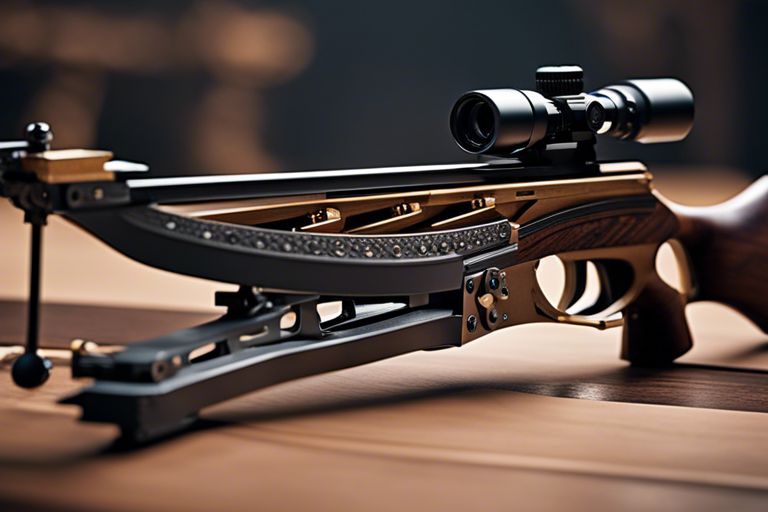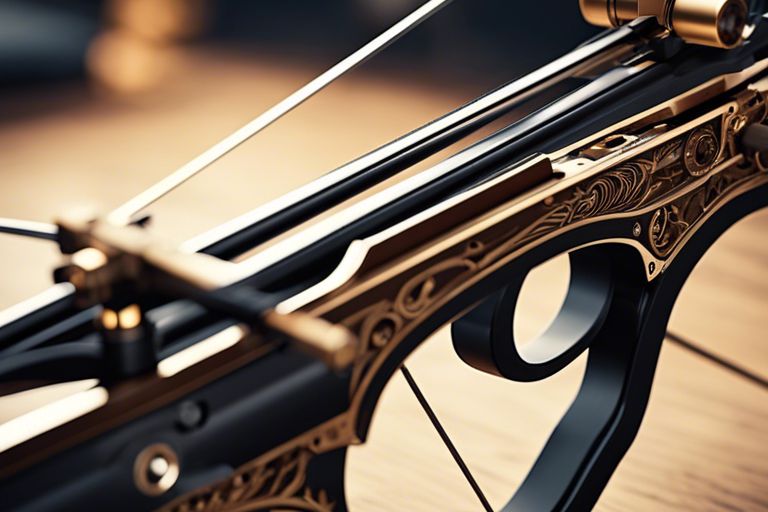Over centuries, the craftsmanship behind the creation of a crossbow has evolved into a fine art, with each component meticulously designed for precision and power. From the limbs that store and release energy to the trigger mechanism that ensures accuracy, every part plays a crucial role in the functionality of this formidable weapon. Understanding the intricate details of how a crossbow is constructed sheds light on the dangerous potential it holds, as well as the skill required to wield it effectively. Let’s examine into the engineering marvel that is a crossbow and appreciate the complexity that goes into its creation.
Contents
- Historical Context
- Evolution of Crossbow Design
- Crossbow Use in Warfare and Hunting
- Components of a Crossbow
- Crafting the Limbs
- The Bowstring and Its Importance
- Assembling the Crossbow
- The Stock and Its Functionality
- The Trigger Mechanism and Its Precision
- Advanced Crossbow Features
- Sighting Systems for Accuracy
- Innovations in Crossbow Technology
- Final Words
Historical Context
While the crossbow is often associated with medieval warfare, its history dates back even further. The earliest evidence of crossbows dates back to ancient China around the 5th century BC. Over time, crossbows spread to other regions such as Europe, the Middle East, and Africa, evolving in design and functionality.
Evolution of Crossbow Design
For centuries, craftsmen and engineers worked tirelessly to enhance the design and performance of crossbows. From the simple handheld crossbows of ancient times to the more sophisticated and powerful arbalests of the Middle Ages, the evolution of crossbow design was driven by the quest for greater accuracy, range, and impact.
Crossbow Use in Warfare and Hunting
An necessary weapon in both warfare and hunting, the crossbow revolutionized military tactics and hunting practices. In warfare, crossbows provided soldiers with a deadly advantage, being capable of piercing through armor with precision and force. In hunting, crossbows offered hunters the ability to take down game from a distance with accuracy and efficiency.
Historical records indicate that crossbows were widely used by armies across different continents, from the battlefields of Europe to the conquests of the Mongol Empire. Their lethal capabilities made them a feared weapon on the battlefield, changing the course of many conflicts.

Components of a Crossbow
ItHistory of crossbows records the evolution of these weapons, from ancient times to the sophisticated designs we see today. Understanding the components of a crossbow is crucial to appreciating the intricate craftsmanship involved in its manufacture.
Crafting the Limbs
The limbs of a crossbow are crucial components that store and release energy when the bowstring is drawn back. Crafted from durable materials like fiberglass or carbon fiber, these limbs are designed to flex and propel the bolt forward with incredible force. Ensuring the limbs are precisely crafted and calibrated is necessary for accuracy and power in shooting.
The Bowstring and Its Importance
To unleash the power of a crossbow, the bowstring plays a vital role in transferring energy from the limbs to the bolt. It must be made from high-quality materials like fast flight strings or Dacron to withstand the immense tension and force exerted upon release.
For instance, a frayed or worn-out bowstring can be extremely dangerous, as it may snap under pressure, causing serious injury to the shooter or bystanders. Regular maintenance and replacement of the bowstring are crucial to ensure safe and effective operation of the crossbow.
Assembling the Crossbow
The Stock and Its Functionality
Any masterpiece of a crossbow begins with the stock, which serves as the backbone of the weapon. Crafted from high-quality wood or composite materials, the stock provides stability and support to the entire structure. It also houses the trigger mechanism and the bow assembly, ensuring proper alignment for precision shooting.
The Trigger Mechanism and Its Precision
Any crossbow enthusiast understands the critical role of the trigger mechanism in achieving accuracy and control. One must pay attention to the intricate design and precision of this component, as it is responsible for releasing the string at the right moment. Failure in the trigger mechanism could result in misfires or even accidents, emphasizing the need for meticulous craftsmanship and testing during assembly.

Advanced Crossbow Features
- Sighting Systems for Accuracy
- Innovations in Crossbow Technology
Sighting Systems for Accuracy
The intricacies of a crossbow extend to its sighting systems, crucial for enhancing accuracy in shooting. Whether utilizing red dot sights, scopes, or holographic sights, these systems assist archers in zeroing in on their target with precision. Some advanced crossbows even feature illuminated reticles for improved visibility in low-light conditions, ensuring accurate shots even during dusk or dawn.
Innovations in Crossbow Technology
Crossbow technology continues to evolve, introducing features that revolutionize archery experiences. Innovations like anti-dry fire mechanisms, integrated cocking devices, and adjustable grips provide users with unmatched convenience, safety, and customization options. It is imperative for enthusiasts to stay updated on the latest advancements to enhance their shooting performance and overall enjoyment of the sport.
Final Words
Considering all points discussed, it is evident that the construction of a crossbow involves intricate craftsmanship that spans across its limbs, stock, and trigger mechanism. The careful assembly of these components is crucial in ensuring the weapon’s accuracy, power, and reliability. From the selection of materials to the precision of each cut and join, every step in the crafting process plays a vital role in the final product’s performance. The intricate details and labor-intensive techniques required to build a crossbow showcase the skill and dedication of the craftsmen behind these powerful weapons. The evolution of crossbow technology has come a long way, but its essence remains rooted in the meticulous artistry and engineering that goes into its creation.

Leave a Reply